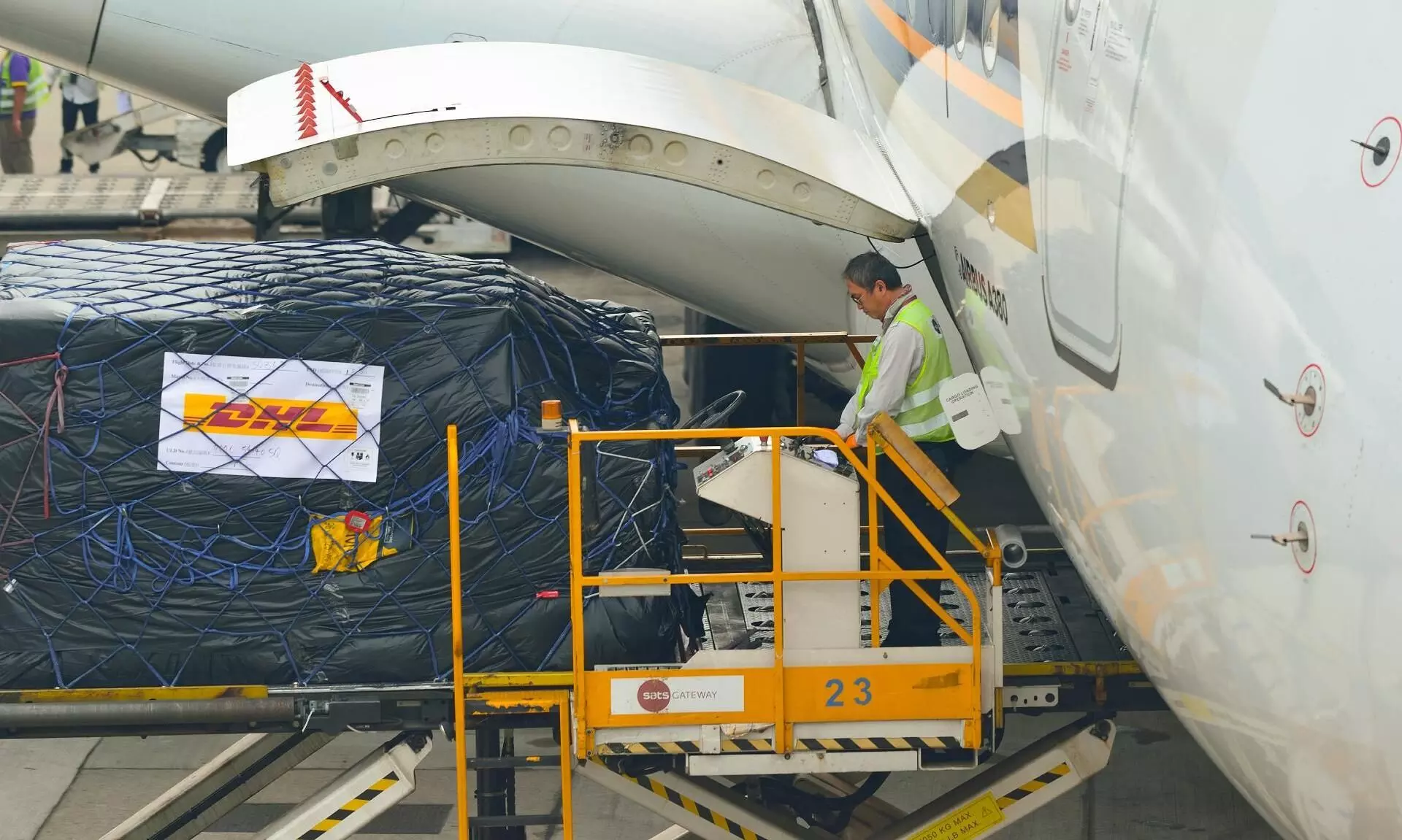
Still in search for balance

The global air cargo market is still affected by the drop in demand and return of capacity taking a toll on stakeholders' financials. The industry is still in search of pre-pandemic normalisation and balance.
In the profitability projections for airlines published in December 2023, The International Air Transport Association (IATA) announced that it expects stabilisation in 2024 even though net profitability at the global level is expected to be well below the cost of capital in both 2023 and 2024. It projects the airline industry's net profits to reach $25.7 billion in 2024 (2.7 percent net profit margin), a slight improvement over 2023 which is expected to show a $23.3 billion net profit (2.6 percent net profit margin).
Meanwhile, cargo revenues are expected to fall to $111 billion in 2024, down sharply from an extraordinary peak of $210 billion in 2021, but it is above 2019 revenues which were $101 billion.
It also reads, “Yields will continue to be negatively impacted by the continued growth of belly capacity (related to strong growth on the passenger side of the business) while international trade stagnates.”
2023 has been a very difficult year for the global airfreight market with both demand and supply applying downward pressure on rates and thus affecting the balance sheet of players across the chain. The deteriorating nature of global trade influenced by ongoing wars and inflationary pressures affected the volumes available for air cargo.
The quarterly World Trade Organisation (WTO) Goods Trade Barometer issued on November 27, 2023, indicated that the global merchandise trade volume is recovering after its slump. However, it noted that mixed economic results and increasing geopolitical tensions make the near-term outlook highly uncertain.
“World merchandise trade volume was flat in the second quarter of 2023, up 0.2 percent compared to the previous quarter but still down 0.5 percent year-on-year,” it reads. Citing the IATA cargo numbers, the WTO report also noted that “Airfreight has proved to be a very timely indicator of overall world trade and an early signal of turning points in recessions.”
Meanwhile, the IATA Global Outlook for Air Transport published in December 2023 recollected that following a robust performance during the pandemic and especially in 2021, global air cargo demand faced considerable challenges in 2022, including a slowdown in global trade and economic growth, the war in Ukraine, high inflation in key markets, and elevated global oil prices, all of which exerted significant downward pressure on cargo markets.
“Industry-wide cargo tonne-kilometres (CTKs) started to contract in early 2022 and fell every month until the middle of 2023. Although trade and exports have remained sluggish, CTKs have managed to rebound since then, improving from the double-digit declines earlier this year to almost 2 percent YoY growth as of September,” it reads.
"Global trade has continued to normalise after the pandemic-related boom and the recovery of the global economy has so far failed to materialise, also against the backdrop of higher interest rates and geopolitical crises.”
Tobias Meyer, DHL
With an already subdued peak season in 2023, we expect the overall global air cargo demand in 2023 to be down by 2 percent compared to 2022, noted the logistics market analytics platform Xeneta in its Air Freight Outlook for 2024.
Going in-depth it noted, “Air cargo demand has not yet fully recovered to pre-pandemic levels. This can be mainly attributed to declining general cargo volumes rather than specialised cargo, which has remained steady. The 8 percent decline in global demand compared to pre-pandemic also points to the fundamental fact that overall air cargo demand is growing slower than real global GDP growth.
The impact of lower volumes is visible in the recent financial results announced by airlines and freight forwarders. For instance, FedEx recently announced their results for Q2 ended on November 30 which missed the market expectation and caused the shares to drop.
FedEx executive vice president and chief financial officer John Dietrich, said, “With demand continuing to pressure the top-line, we are pleased with our ability to deliver stronger operating leverage and improved profitability, enabling us to maintain our fiscal year adjusted earnings outlook. These results are a testament to DRIVE initiatives taking hold, where we are focused on improving margins and driving long-term returns for our stockholders.”
DHL Group also did not match the prior-year figures in Q3 2023 with revenue of EUR 19.4 billion (Q3 2022: EUR 24.0 billion) and operating profit (EBIT) of EUR 1.4 billion (Q3 2022: EUR 2.0 billion). “Lower freight volumes and rates as well as exchange rate and fuel cost effects impacted the DHL business,” the results release reads.
Tobias Meyer, CEO of DHL Group, said, "Global trade has continued to normalise after the pandemic-related boom and the recovery of the global economy has so far failed to materialise, also against the backdrop of higher interest rates and geopolitical crises.”
The drop in demand was not only felt among integrators but all major cargo airlines reported a 30 to 40 percent YoY decrease in revenue in the third quarter. For instance, Lufthansa Group reported a 41 percent decline in cargo revenue at €675 million while adjusted EBIT plunged to €1 million from €331 million in Q32022. For the first nine months of 2023, cargo revenue declined 38 percent to €2.2 billion and adjusted EBIT dropped 86 percent to €189 million. The airline also noted that capacity was up nine percent, and the cargo load factor declined five percentage points.
Along with the fall in demand, the return of capacity is another challenge that the air cargo ecosystem faced in 2023. According to IATA, cargo capacity, measured in available cargo tonne kilometres (ACTKs), expanded consistently since the beginning of 2023, driven mostly by the resurgence of passenger aircraft belly-hold capacity on international routes.
“Global air cargo capacity surpassed the pre-Covid level in April 2023. As of September, industry-wide ACTKs exceeded their pre-pandemic level by 4 percent. Passenger aircraft belly-hold capacity as a share of total ACTKs has risen to 49 percent year-to-date (YTD) in 2023, from a low of 20 percent in 2020. Over the past two years, the capacity for international cargo transported in the belly space of passenger aircraft has risen markedly, nearly doubling its proportion relative to the diminishing role of dedicated cargo aircraft. The incoming capacity in the belly hold of passenger aircraft has caused a decrease in the cargo load factors (CLF) on international routes. The downward trajectory of CLFs will likely stabilise once passenger and cargo traffic levels realign with pre-pandemic norms,” it reads.
“With demand continuing to pressure the top-line, we are pleased with our ability to deliver stronger operating leverage and improved profitability, enabling us to maintain our fiscal year adjusted earnings outlook.”
John Dietrich, FedEx
Xeneta also reported s falling load factor and its impact on spot rates. “With falling demand and increasing capacity, it is not surprising to see dynamic load factor register consecutive declines for the past 12 months compared to the previous year. Perhaps a glimmer of classic seasonality patterns, the dynamic load factor improved in absolute terms as the air cargo market entered the year-end holiday season, it reads.
As the market continues to rebalance supply and demand, the global air cargo spot rate registered a year-on-year decline for the 12th consecutive month. Xeneta noted, “In absolute terms, the air cargo spot rate finally bottomed out in August and reached a four-month high in October as the traditional end-of-year rise in rates loomed.”
While talking about whether more rate decline to be expected, Niall van de Wouw, chief airfreight officer, Xeneta, noted that the rapid rate decline which started earlier this year has calmed down in recent months and it seems to be the market has a new rate baseline, from which I expect the classic seasonality patterns to emerge again.
“We will not see a similar return of air freight capacity next year, hence the downward pressure on load factors and rates will be less than what we saw during Q2/Q3 this year,” he said.
There are also other factors affecting the financials of cargo airlines. For instance, While batting for the wet leasing solutions for airlines in his outlook for 2024, chairman of Avia Solutions Group Gediminas Ziemelis pointed out that the era of low borrowing costs which lasted from 2008 to 2022 is over even though it appears that the central bank interest rates may have peaked and we are entering a more stable period.
"This presents a major challenge for airlines looking to take advantage of the booming demand we currently have. Many are already heavily leveraged, having borrowed during the Covid-19 pandemic to stay afloat. These airlines must now pay even higher rates to borrow more, and the levelling out of central bank interest rates will not change this reality any time soon," he wrote.
“We will not see a similar return of air freight capacity next year, hence the downward pressure on load factors and rates will be less than what we saw during Q2/Q3 this year.”
Niall van de Wouw, Xeneta
As the global airfreight industry enters 2024, it is expecting a recovery and demand-supply balance by the second half of the year even though the challenges persist and stakeholders are under severe pressure.
This was originally published in the January 2024 issue of The STAT Trade Times.

